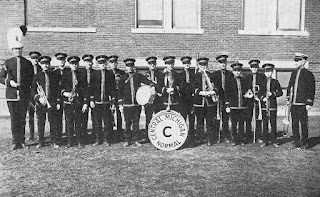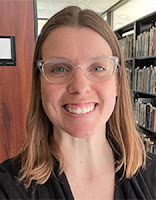For five days in August 2023, I nestled into a quiet corner of the Clarke Historical Library and rigorously searched for fairy tales waiting to be discovered. With the generous support of the International Children's Literature Research Grant, my quest was to unearth captivating stories that could resonate with young readers. As an Information Science scholar specializing in fairy tales, my research focuses on identifying stories that offer opportunities for girls and women to connect their experiences with these timeless narratives.
Some interpretations of classic fairy tales (*cough*Disney*cough*) have perpetuated harmful stereotypes and ideals, often portraying female characters as submissive, beautiful, and thin. Fairy tales need not reinforce such limiting narratives. Indeed, iconic princesses like Cinderella and Sleeping Beauty may seem one-dimensional at first glance, but they can be understood more profoundly, revealing layers of resilience, determination, and inner strength. However, it's equally important to acknowledge a world of untapped potential in fairy tales, unknown or lesser-known, waiting to be discovered.
Perhaps we must reimagine what heroism and empowerment mean for today's generation. A more complex, inclusive, and diverse narrative landscape—one that offers a broad spectrum of stories for girls and women of all backgrounds—reinforces the fundamental right of everyone to see oneself as the hero of their own narrative. Amidst my research journey at Clarke, I was fortunate enough to stumble upon fairy tales that embody richness and complexity.
Published in 1877, "The Toy Princess" by Mary de Morgan1 is a fairy tale about a girl named Ursula who is born into a regimented kingdom where she is restricted from expressing any emotion. No laughing or crying, and people “never said more than was quite necessary, as ‘Just so,’ ‘Yes indeed,’ ‘Thank you,’ and ‘If you please.’” Ursula’s father, the king, wants the successor to his throne to be obedient, detached, and well-behaved. With magical help from a fairy godmother, Ursula escapes the kingdom, replacing herself with a mechanical toy princess who looks identical to her and behaves in the same polite and reserved manner as the people in the kingdom. Ursula is taken to a humble fishing village, where she grows up with a loving fisherman and his family. Years later, the kingdom is shocked when, by chance, the toy princess's head falls off, revealing its true nature. I won’t give the ending away…please read it!2
In the 1912 collection, The Maker of Rainbows,3 a fairy tale titled “The Rags of Queen Cophetua” retells the story of a legendary African king. King Cophetua of Ethiopia falls in love with a young woman he sees begging for money. They marry, and she becomes Queen. But in this 1912 version of the fairy tale, the Queen grows weary and longs for independence. When she opens the box containing her old, tattered clothes, she remembers who she once was and puts on the ragged garments. Suddenly, the king accidentally interrupts her. Seeing her in her tattered dress, the king recognizes the sadness in her eyes and asks, “Are you weary of being queen?” These two characters love each other immensely, but is love enough? This fairy tale contains themes of loss, longing for independence, love, identity, and change.
 |
| Illustration from, "The Rags of Queen Cophetua" |
Both of these fairy tales offer new and profound interpretations that delve into the complexities of identity and self-discovery. My research, supported by the International Children's Literature Research Grant, underscores that while well-known princesses can be read with depth and complexity, untold stories are waiting to be uncovered in libraries like Clarke. Let us remember that these narratives are not only vehicles of enchantment but also tools of empowerment, capable of reshaping our perceptions and inspiring new generations of readers to see themselves in the stories they cherish.
Note: I would like to extend my deepest appreciation to all who have made this grant possible, especially Dr. Susan M. Stan, whom this grant honors. Her legacy and dedication to children’s literature paved the way for scholars like me to pursue our passions and make a meaningful impact.
[1] Mary de Morgan, "The Toy Princess," from On a Pincushion, and Other Fairy Tales, 1977 (PZ8 .D399 On3).
[2] Links to "The Toy Princess" point to an anthology by Louey Chisholm, The Enchanted Land : Tales Told Again, 1906, which includes a reprint of "The Toy Princess" authorized by Mary de Morgan.
[3] Richard le Gallienne, The Maker of Rainbows, and Other Fairy-tales and Fables, 1912 (PR4881 .M3 1912).







